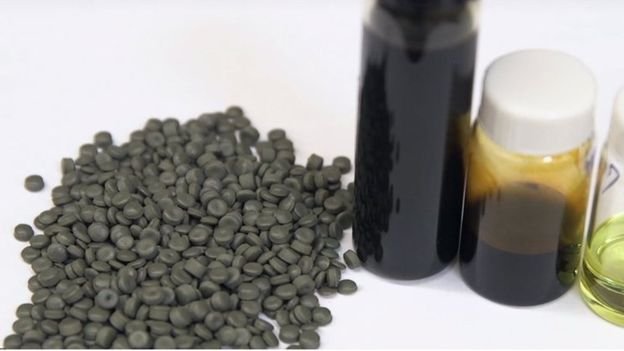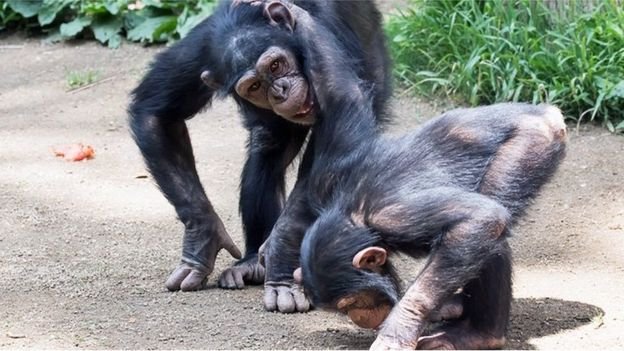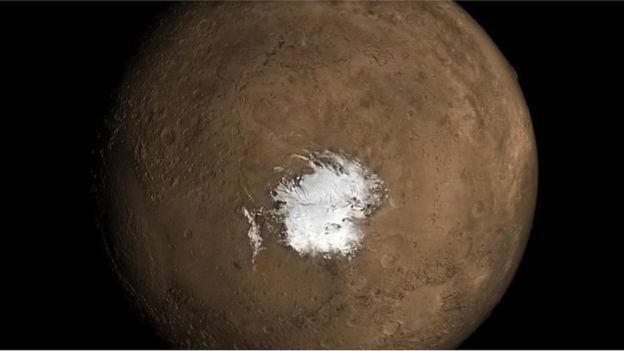Plastic fuel, artificial food, chimpanzee language and volcanoes on Mars
There is a chance to turn plastic trash into liquid fuel
Chemists of the American University of Purdue have developed a new method of processing waste from polypropylene, which can reduce the volume of household waste from polymers by up to 25%.
It is about converting plastic into liquid fuel, which can be added to gasoline and diesel fuel.
"Our technology can increase the profitability of waste disposal and significantly reduce the amount of plastic waste in the world," said chemist Linda Wang, who participated in the study.
The method is based on the property of ordinary water — when heated under conditions of high pressure, it behaves simultaneously as a liquid and a gas. This state of aggregation is called supercritical fluid.
When heated to 500 degrees Celsius under pressure of more than 225 atmospheres for several hours, the water enters this state.
In this form, water can turn into a mixture of solvent and catalyst, which transforms the molecular structure of polymers and turns certain types of plastic into liquid (naphtha, or naphtha), which has relatively short carbon chains.
This process of hydrothermal liquefaction has been known for a long time and is used in the oil refining industry — for example, in the rectification of heavy grades of oil and the removal of contamination from oils.
Hydrothermal liquefaction and previously tried to apply to dissolve polyethylene, but without much success.
However, a group of American chemists have recently succeeded in converting more than 90% of the initial mass of polypropylene into naphtha-type petroleum products, which can be quite cost-effective in the production of various types of auto-fuel.
Although polypropylene accounts for only a quarter of the total volume of polymers produced in the world, it is considered the most stable of them. So, a plastic bag from a store disintegrates there only after 600 years.
Currently, only 20% of all plastic waste is recycled into other products. China’s recent decision to stop importing plastic waste for recycling has led to the fact that growing volumes of such waste are burned, polluting the atmosphere with carcinogenic gases.
What do chimpanzees have in common with human language?
Linguists have found that the language of gestures, grimaces and sounds that are exchanged between playing chimpanzees is subject to the same basic principles that mathematicians describe the natural languages of man.
The study, conducted by scientists at the British University in Rohampton, analyzed hundreds of videos of chimpanzees made in the Budongo reserve in Uganda.
Anthropologists were able to identify and evaluate the parameters of 58 types of gestures exchanged by primates.
Scientists searched for signs of two laws that describe all forms of human communication - Zipf's law on the empirical regularity of the distribution of words in a language, and Menzerat's law on large linguistic constructions.
Already known are studies of the chimpanzee sound language, which show that these laws are also valid for him. But scientists have found that sign language and grimaces play an equally important role in the life of primates.
Zipf's law says: if all words of a language are ordered by decreasing frequency of their use, then the frequency of the nth word in such a list will be approximately inversely proportional to its ordinal number n (the so-called rank of the word). For example, the second most common word is about twice as rare as the first, the third is three times less common than the first, and so on.
Scientists have found that among 2137 gestures there was no clear correlation between the duration of the selected gesture and the frequency of its use.
And only when these gestures were classified into groups, and their duration averaged, clear signs of the presence of patterns appeared. Each type of gestures had its own frequency - and it turned out that the more chimpanzees used this type of gesticulation, the shorter the gestures lasted.
So with the law of Menzerat: it turned out that when considering large semantic groups of gestures, large structures were built from simpler and shorter elements.
These results indicate that the laws of evolution that underlie the development of primate language activity are the same for all representatives of this genus.
Geophysicists believe that there is volcanic activity on Mars
Science magazine publishes an article by a group of geophysicists who believe that traces of volcanic activity can still be maintained on Mars.
It is known that in the past on Mars was a much warmer and more humid planet. And today there is water on Mars - mostly in the form of ice and steam.
In August 2018, the first evidence appeared that the south pole of the planet has a lake of liquid water up to 20 km wide under a layer of water ice. Then it was suggested that this water is preserved in a liquid state due to the high pressure of the ice cover and the high content of dissolved salts in it.
However, the new data presented in the article show that these two factors are not enough to explain the presence of liquid water on Mars. Only volcanic activity could maintain the temperature of the water above the freezing point.
Geophysicists believe that a magma chamber formed at the site of the lake several hundred years ago. Only such a model can explain the presence of liquid water so close to the surface of the planet.
A new study, published by the journal of the American Geophysical Society Geophysical Research Letters, casts doubt on the previously put forward explanations for this fact.
Among planetologists, there are disputes over the nature of Martian water. They are directly related to solving the riddle of the emergence of organic life in the solar system.
"We believe that if there is some kind of life there, then it was covered from space by a layer of ice," said Ali Bramson, a staff member of the Lunar and Planetary Laboratory of the University of Arizona, who led the research team.
"If there are still active magmatic processes there, it is possible that in the recent past of the planet they met more frequently than they are now. They could provide more favorable conditions for the existence of life," said Bramson.
Mars was a volcanically active planet in the early stages of its history. For example, Mount Olympus is considered the largest volcano in the solar system, reaching a height of 12 km. There are many craters of obviously volcanic origin on Mars.
In their article, the authors write that about 300 thousand years ago there was a rise of magma from the inner core of Mars to the surface. Instead of forming a volcano like Olympus, this magma formed a center or chamber under the planet’s south poles.
From the point of view of geology, this is not too long ago, and scientists believe that this magma is still capable of retaining heat and warming the layer of water above it.
New food products are created in laboratories.
In the past, many science fiction writers have described the future of humanity, in which traditional foods have given way to pills or similar artificial substances.
Now we are talking about creating more balanced and healthy foods that can be used in different conditions by different groups of people.
The demand for such products is constantly growing. For example, there are about 3 million people in the world who suffer from dysphagia syndrome - difficulty swallowing. Such people are forced to eat liquid food - mashed potatoes, mousses and the like. But such a diet is very monotonous and time consuming.
Recently there was information that new products are about to appear on the market. For example, liquid meat, which is a product of processing natural meat in autoclaves with high pressure and temperature.
Researchers are also working to create new varieties of cheese from milk, in which the size of the fat particles is strictly controlled. It changes the texture of the cheese, making it softer.
Both of these products have a natural taste and smell, but are more easily absorbed by the digestive system and easier to swallow.
Another area of the new food industry is the development of unsaturated fats, which can leave the same taste in your mouth as polysaturated fats. This will help in the production of new dietary products - for example, sour cream and cottage cheese, which will not differ in taste.
Another area of new food product development was the introduction to the recipe of already known products of useful vitamins and trace elements. In many countries, for example, this is done with bread — vitamin B1 and folic acid are added. This helps pregnant women to avoid some defects in the development of the fetus. Iodized salt and fluorinated water are also known.
In South Africa, local scientists recently offered to bake cookies made from sorghum flour and peas, which are easily grown in these areas of the continent and cost a little. Such cookies provide 50% of the protein needs of the child. His recipe is very simple - such cookies can be baked at home.
In India, spirulina algae is added to cookies, which are rich in trace elements and vitamins. The United Nations recently put this product into service, incorporating it into rations that are delivered to disaster sites


